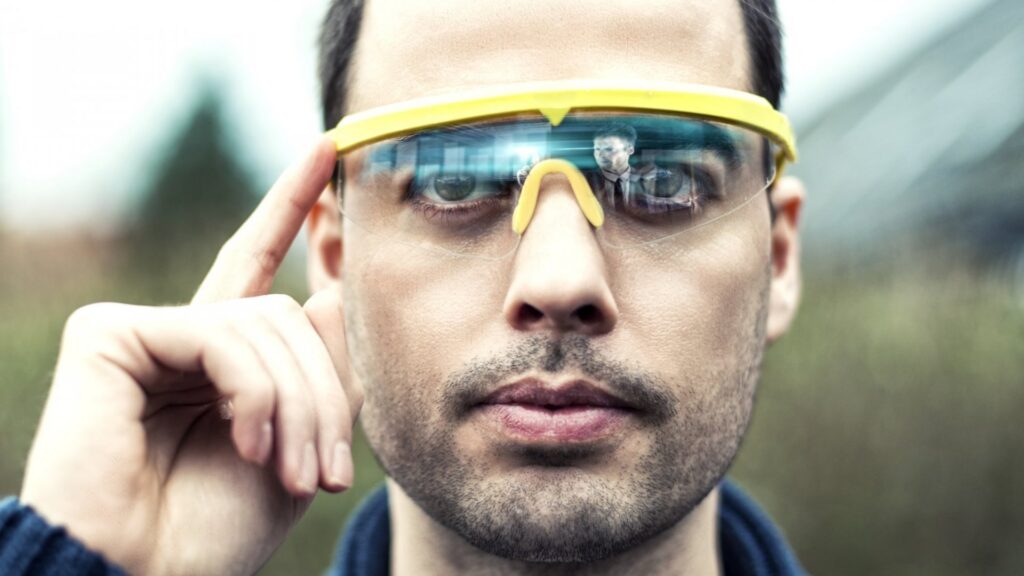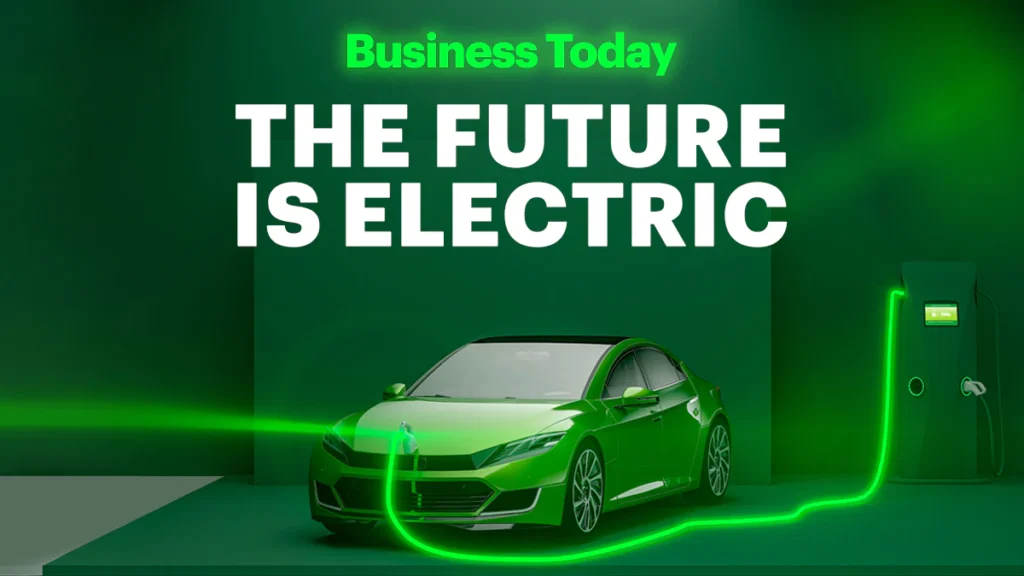Technology
The Latest in Wearable Tech: Gadgets That Can Improve Your Life

Wearable technology has rapidly evolved over the past decade, transitioning from simple fitness trackers to sophisticated gadgets capable of enhancing multiple aspects of our lives. These devices are designed to be worn on the body, providing convenience, health insights, and connectivity in ways that were once unimaginable. As wearable tech continues to advance, it’s transforming everything from fitness routines to workplace efficiency and personal safety.
The Latest in Wearable Tech: Gadgets That Can Improve Your Life

1. Smartwatches: Beyond Fitness Tracking
Smartwatches have come a long way since their inception as step-counters and calorie trackers. The latest models do far more than monitor physical activity. They serve as extensions of your smartphone, enabling you to make calls, send texts, and manage apps right from your wrist. But that’s just the beginning.
Today’s smartwatches come equipped with advanced health monitoring features, such as electrocardiograms (ECG), blood oxygen monitoring, and even sleep apnea detection. These capabilities are especially beneficial for those who want to keep track of their heart health or detect early signs of illness.
Furthermore, smartwatches can now act as personal assistants, reminding you of appointments, helping you stay organized, and even providing mindfulness exercises. With the integration of voice assistants like Siri and Google Assistant, managing your day has never been easier.
2. Smart Glasses: Augmented Reality at Your Fingertips
While smart glasses have been around for a few years, the latest iterations are truly groundbreaking. These wearable devices allow users to experience augmented reality (AR) by overlaying digital information onto the physical world. Imagine walking down the street and having navigation instructions appear directly in your field of view, or being able to translate a foreign sign in real-time without looking at your phone.
Companies like Meta, Google, and Apple are pushing the boundaries of what smart glasses can do. These devices can now be used for hands-free calling, real-time information retrieval, and even immersive gaming experiences. They’re also making a splash in the workplace, especially in fields like engineering, design, and healthcare, where augmented reality can improve efficiency and accuracy.
In the future, we may see smart glasses become as ubiquitous as smartphones, integrating seamlessly into our daily lives.
3. Wearable Fitness Devices: Going Beyond the Gym
Fitness wearables were among the first forms of wearable tech to gain mainstream popularity. Today, they’ve evolved far beyond simple step counters. The latest fitness wearables can monitor a wide array of metrics, from heart rate variability and VO2 max to sleep cycles and stress levels.
What’s more, these devices now incorporate AI-driven coaching systems that can create personalized workout plans based on your individual health data. This allows users to optimize their workouts for maximum efficiency and safety, whether they’re training for a marathon or just trying to stay in shape.
The latest wearables are also integrating more holistic wellness features, such as guided breathing exercises, hydration reminders, and even posture correction prompts. This makes them valuable tools not only for fitness enthusiasts but for anyone looking to improve their overall well-being.
4. Smart Clothing: Tech-Enhanced Apparel
Smart clothing is another exciting frontier in wearable tech. Imagine wearing a shirt that can monitor your heart rate, detect changes in your body temperature, or even charge your devices. Smart fabrics are being woven with sensors that can track various biometrics, providing real-time feedback on your health and performance.
Athletes are already benefiting from this technology. Smart clothing can analyze muscle activity, breathing patterns, and endurance levels, helping athletes fine-tune their performance. In the medical field, smart garments are being developed to monitor chronic conditions, such as heart disease or diabetes, alerting both patients and doctors to potential issues before they become critical.
The convenience of smart clothing lies in its seamless integration into daily life. Unlike other wearables that need to be put on and taken off, smart clothing is simply worn like any other garment, making it easy to gather health data without any extra effort.
5. Wearable Health Monitors: Revolutionizing Healthcare
One of the most impactful developments in wearable tech is its application in healthcare. Devices like continuous glucose monitors (CGMs), wearable ECG monitors, and smart inhalers are changing the way patients manage chronic conditions.
For example, CGMs allow diabetics to monitor their blood sugar levels in real-time, eliminating the need for frequent finger-prick tests. Smart inhalers help asthma patients track their medication usage and predict potential attacks based on environmental data.
Wearable health monitors are not only beneficial for patients but also for healthcare providers. These devices can send real-time health data to doctors, allowing for more accurate diagnoses and personalized treatment plans. In the future, wearable health monitors could become a standard part of preventive care, catching health issues before they become serious.
6. Sleep Tech: Enhancing Rest and Recovery
Sleep is a critical component of overall health, and wearable tech is playing a significant role in helping people get better rest. Devices like smart sleep masks, sleep trackers, and even smart mattresses are designed to optimize your sleep environment and monitor your sleep patterns.
Advanced sleep trackers can analyze the quality of your sleep, providing insights into your REM cycles, light sleep, and deep sleep. They can also offer personalized recommendations to improve your sleep hygiene, such as adjusting your bedtime or reducing screen time before bed.
For those who struggle with insomnia or other sleep disorders, wearable sleep tech can be a game-changer. Some devices use gentle vibrations or soothing sounds to help you fall asleep faster, while others monitor your body temperature and adjust your sleep environment to keep you comfortable throughout the night.
7. Safety Wearables: Enhancing Personal Security
Wearable tech isn’t just about convenience and health—it’s also about safety. Personal safety wearables are designed to keep users safe in various situations, from walking alone at night to hiking in remote areas. Devices like panic button necklaces, GPS trackers, and wearable cameras can provide an added layer of security.
The Latest in Wearable Tech: Gadgets That Can Improve Your Life

Some wearables are designed specifically for seniors or those with medical conditions, offering fall detection and emergency alert features. These devices can automatically alert emergency services or loved ones if the wearer is in distress, providing peace of mind for both the user and their family.
Conclusion
Wearable technology is no longer just a trend—it’s becoming an integral part of our everyday lives. From smartwatches that keep us connected to health monitors that revolutionize the way we manage chronic conditions, these gadgets are improving our well-being, productivity, and safety. As technology continues to advance, wearable devices will become even more sophisticated, offering new and innovative ways to enhance our lives. Whether you’re a fitness enthusiast, a tech lover, or someone looking to improve your health, there’s a wearable gadget out there that can help you achieve your goals. The future of wearable tech is bright, and it’s only just beginning.
The Latest in Wearable Tech: Gadgets That Can Improve Your Life
Technology
“The Gig Economy: How It’s Redefining Work in the 21st Century”

The 21st century has ushered in a dramatic shift in the way we work, driven by technological advancements, evolving societal values, and an ever-changing economic landscape. At the heart of this transformation is the rise of the gig economy, a decentralized labor market where individuals work as independent contractors or freelancers, often on short-term contracts or projects, rather than traditional, full-time employment.
The Gig Economy: How It’s Redefining Work in the 21st Century

What Is the Gig Economy?
The gig economy refers to a labor market characterized by short-term contracts or freelance work rather than permanent jobs. Companies like Uber, Lyft, Airbnb, Fiverr, and TaskRabbit have become synonymous with the gig economy, providing platforms where people can offer services ranging from ride-sharing and home rentals to graphic design and coding.
At its core, the gig economy is built on flexibility—workers can choose when, where, and how much they work. This level of autonomy is attractive to many, especially millennials and Gen Z, who value work-life balance and the freedom to pursue multiple income streams.
The Growth of the Gig Economy
Several factors have contributed to the rapid expansion of the gig economy:
- Technological Advancements: The rise of smartphones and apps has made it easier for people to connect with potential clients and customers. Platforms like Uber and Upwork serve as intermediaries, allowing workers to find gigs with the tap of a button.
- Shifting Work Preferences: Younger generations are redefining what work means. Many value experiences over material possessions and prefer jobs that provide flexibility and independence. Traditional 9-to-5 jobs are seen as limiting, prompting many to seek out freelance or contract work.
- Economic Necessity: For some, the gig economy isn’t just a choice; it’s a necessity. After the 2008 financial crisis, many full-time jobs disappeared, forcing individuals to find alternative sources of income. In recent years, the COVID-19 pandemic further accelerated the gig economy’s growth, as millions sought remote or flexible work options.
- Employer Benefits: From a business perspective, hiring gig workers can be cost-effective. Employers can scale their workforce up or down based on demand without the costs associated with full-time employees, such as benefits, office space, or long-term commitments.
The Advantages of the Gig Economy
The gig economy offers a range of benefits for workers, businesses, and even consumers:
- Flexibility and Autonomy: One of the most appealing aspects of gig work is the ability to set your own schedule. Whether you’re an Uber driver choosing to work during peak hours or a freelance writer balancing multiple clients, gig workers can adjust their workload to suit their lifestyle.
- Multiple Income Streams: Many gig workers take on several jobs simultaneously. This diversity allows them to mitigate risk; if one gig dries up, another may pick up. It also opens up opportunities for people to monetize their hobbies or passions, such as selling crafts on Etsy or offering pet-sitting services through Rover.
- Work-Life Balance: Gig work can offer a better work-life balance compared to traditional employment. For example, parents can choose gigs that fit around their children’s school schedules, or digital nomads can work while traveling the world.
- Low Barrier to Entry: Many gig economy platforms allow individuals to start working with minimal qualifications or experience. For example, ride-share drivers only need a vehicle and a driver’s license, while freelance platforms like Fiverr enable anyone to market their skills without needing a college degree.
Challenges of the Gig Economy
While the gig economy offers undeniable advantages, it also comes with significant challenges:
- Lack of Job Security: Gig workers are typically independent contractors, meaning they don’t enjoy the same job protections as full-time employees. There’s no guarantee of steady work, and contracts can end suddenly, leaving workers without income.
- Absence of Benefits: Unlike traditional employees, gig workers do not receive benefits like health insurance, retirement plans, or paid leave. This lack of social safety nets can be a major disadvantage, particularly for those who rely solely on gig work for their livelihood.
- Income Instability: Gig workers often experience fluctuating income based on demand. For instance, ride-share drivers might see a surge in customers during the holiday season, only to experience a lull afterward. This inconsistency makes financial planning challenging.
- Exploitation Risks: Some critics argue that gig economy platforms can exploit workers by taking significant commissions and offering low pay for the amount of work required. Additionally, the absence of regulations leaves workers vulnerable to unfair practices.
The Future of the Gig Economy
As the gig economy continues to grow, so too will the debates surrounding its long-term sustainability and impact on workers’ rights. Several trends are likely to shape its future:
The Gig Economy: How It’s Redefining Work in the 21st Century

- Increased Regulation: Governments are beginning to take notice of the gig economy’s rapid expansion. Some have already implemented laws to ensure gig workers receive fair treatment. For example, California’s Assembly Bill 5 (AB5) requires some companies to classify gig workers as employees rather than independent contractors, providing them with benefits and protections.
- Technological Evolution: As technology continues to advance, we can expect even more platforms and opportunities for gig work. Artificial intelligence and automation may also play a role, streamlining certain gig tasks or even replacing some jobs, which could lead to new challenges for workers.
- Worker Empowerment: There’s a growing movement among gig workers to organize and demand better conditions. Gig worker unions and advocacy groups are emerging, pushing for fair pay, benefits, and protections.
- Diversification of Gig Work: While ride-sharing and freelance work have dominated the gig economy, other industries are beginning to embrace this model. Fields like healthcare, education, and finance are increasingly turning to contract and freelance workers to fill short-term or specialized roles.
Conclusion
The gig economy has redefined work in the 21st century, offering unprecedented flexibility and opportunities for those who seek alternatives to traditional employment. However, it also presents significant challenges, including income instability, lack of benefits, and job insecurity. As the gig economy evolves, so too must the frameworks that support and protect its workers.
The Gig Economy: How It’s Redefining Work in the 21st Century
Technology
“The Role of Big Data in Modern Business: A Game Changer or a Fad?”

In today’s fast-paced business environment, the term “big data” has become a buzzword. From small startups to multinational corporations, everyone seems to be leveraging big data to gain insights, optimize processes, and improve decision-making. But what exactly is big data, and is it truly a game changer for modern business, or just another passing trend? In this post, we’ll explore what big data is, its impact on various industries, and whether it’s a lasting tool for transformation or a fleeting fad.
“The Role of Big Data in Modern Business: A Game Changer or a Fad?”

What is Big Data?
Big data refers to the massive volumes of structured and unstructured data that businesses generate and collect daily. This data comes from various sources, including customer transactions, social media interactions, website visits, IoT devices, and more. The defining characteristics of big data are commonly referred to as the three V’s: Volume, Velocity, and Variety.
- Volume: The sheer amount of data generated is enormous and continues to grow exponentially.
- Velocity: The speed at which data is generated and processed. Businesses must often analyze data in real-time to make informed decisions.
- Variety: Big data comes in many forms — from structured data like spreadsheets to unstructured data like videos, social media posts, and emails.
With advances in technology, businesses now have access to tools that can process, store, and analyze this data to extract valuable insights. The question is: are these insights truly revolutionary for business success, or are they simply hyped?
How Big Data is Changing Modern Business
Big data has undeniably made an impact on multiple facets of business operations, reshaping industries in fundamental ways. Let’s dive into some specific examples where big data has proven to be transformative.
1. Enhanced Decision Making
At its core, big data allows businesses to make more informed decisions. Traditionally, decisions were often based on gut feelings or limited data sets. Now, companies can use big data analytics to evaluate vast amounts of information and generate data-driven insights. This enhances accuracy in forecasting, improves risk management, and drives operational efficiency.
For example, in retail, businesses like Amazon use big data to optimize inventory, personalize customer experiences, and predict market trends. By analyzing customer behavior and preferences, they can recommend products, streamline logistics, and improve supply chain efficiency — all of which contribute to a competitive advantage.
2. Personalization and Customer Experience
One of the biggest benefits of big data is its ability to help businesses deliver personalized experiences. Customers today expect more than just a product or service; they demand experiences tailored to their specific needs and preferences. Big data allows businesses to analyze customer interactions, purchasing history, and online behaviors to craft personalized marketing strategies.
Netflix is a prime example. The company uses big data to analyze viewing habits and preferences, allowing it to recommend shows and movies with pinpoint accuracy. This personalization has been a key factor in Netflix’s dominance in the streaming industry.
3. Operational Efficiency and Cost Reduction
Big data can also improve operational efficiency by streamlining internal processes. By analyzing large data sets, companies can identify inefficiencies, optimize resource allocation, and reduce costs. In the manufacturing sector, for example, companies are using big data to improve production processes and equipment maintenance through predictive analytics.
For instance, General Electric (GE) uses big data to predict when their machines need maintenance, reducing downtime and saving costs. This predictive maintenance approach has transformed manufacturing and industrial operations by improving reliability and reducing operational risks.
4. Fraud Detection and Risk Management
Financial institutions and insurance companies have been early adopters of big data for fraud detection and risk management. By analyzing transaction patterns and behavioral data, they can quickly detect anomalies that might indicate fraud. Similarly, businesses can assess risks by identifying trends that impact financial health or regulatory compliance.
Banks like HSBC and JPMorgan Chase leverage big data to monitor real-time transactions and flag suspicious activity, helping prevent fraudulent transactions and protecting customer assets.
5. Innovation and New Business Models
Big data is also paving the way for entirely new business models. By collecting and analyzing data, businesses can uncover unmet customer needs and market gaps, leading to the creation of new products and services. Ride-sharing companies like Uber and Lyft, for example, use big data to match riders with drivers in real-time, adjusting pricing and routes based on demand, traffic patterns, and customer preferences.
6. Predictive Analytics
One of the most exciting aspects of big data is predictive analytics. By analyzing historical data, businesses can make predictions about future trends, customer behavior, and potential risks. This capability helps companies stay ahead of the curve, improving product development, marketing strategies, and overall competitiveness.
For example, in healthcare, predictive analytics powered by big data can forecast disease outbreaks or identify patient populations at high risk for specific conditions, enabling more proactive and preventive care.
Is Big Data a Game Changer or a Fad?
Given these examples, it’s clear that big data has already made significant contributions to modern business. However, the question remains: is it a long-term game changer or just another passing trend?
The Case for Big Data as a Game Changer
Big data’s ability to provide real-time insights, predictive analytics, and personalized customer experiences makes it more than just a fad. As businesses continue to digitize and the volume of data continues to grow, the need for robust data analysis tools will only increase. Companies that fail to embrace big data may fall behind in innovation, efficiency, and customer engagement.
Moreover, big data’s applications in fields like healthcare, finance, and logistics show its potential for driving future breakthroughs, not just in business but across society.
The Case for Big Data as a Fad
On the flip side, some argue that big data may be overhyped, with companies investing heavily in data solutions without fully understanding their needs or goals. In some cases, businesses collect vast amounts of data but struggle to derive meaningful insights or act on them effectively. Without the proper infrastructure, talent, or strategy, big data can become overwhelming, leading to failed projects and wasted resources.
“The Role of Big Data in Modern Business: A Game Changer or a Fad?”

Conclusion
While big data may seem like a complex and intimidating concept, its potential for transforming modern business is undeniable. Whether it’s enhancing decision-making, personalizing customer experiences, or reducing costs, big data is shaping the future of industries across the globe. While there are challenges and risks associated with its use, those who successfully harness the power of big data will likely find it to be a lasting game changer, not just a passing trend.
“The Role of Big Data in Modern Business: A Game Changer or a Fad?”
Technology
The Future of Electric Vehicles: Are We Ready for the Shift ?

Electric vehicles (EVs) are at the forefront of revolutionizing the global automotive industry. With the climate crisis and a growing shift toward sustainability, more people are beginning to embrace EVs as an alternative to conventional vehicles. Yet, despite the hype, many wonder: Are we ready for the shift to electric vehicles?
In this article, we’ll explore the future of EVs, the challenges, and the steps needed to ensure a smooth transition.
The Future of Electric Vehicles: Are We Ready for the Shift ?

The Rise of Electric Vehicles
The popularity of EVs is skyrocketing. According to the International Energy Agency (IEA), global electric car sales increased by 55% in 2022. This growth is fueled by environmental concerns, advances in technology, and government initiatives offering incentives for EV purchases.
Why Electric Vehicles are the Future
- Environmental Impact: Electric vehicles produce zero tailpipe emissions, making them a key solution to reducing air pollution and combating climate change. By cutting reliance on fossil fuels, EVs can significantly lower the carbon footprint of transportation, which is a significant contributor to global greenhouse gas emissions.
- Technological Advancements: EV technology is continuously evolving. Batteries, which have long been the bottleneck for EV adoption, are becoming more efficient, providing longer ranges at lower costs. Companies are developing solid-state batteries and other next-generation solutions that promise to further boost EV performance and decrease charging times.
- Government Support: Many countries are offering subsidies, tax incentives, and rebates to encourage EV adoption. Some governments are even setting ambitious targets to phase out internal combustion engines in the coming decades. For instance, the European Union has proposed banning new petrol and diesel car sales by 2035.
- Cost Savings: Over the long term, EVs tend to be more economical than their gasoline counterparts. While the upfront costs may still be higher, the savings in fuel, maintenance, and government incentives make EVs a compelling choice for cost-conscious consumers.
Challenges to the Shift to Electric Vehicles
Despite the numerous benefits of EVs, there are significant challenges that could slow down the transition:
- Charging Infrastructure: One of the biggest obstacles to widespread EV adoption is the lack of charging infrastructure. While urban areas are gradually becoming more EV-friendly, rural areas and developing countries often lack sufficient charging stations, making long-distance travel a challenge. Expanding the charging network and ensuring fast, reliable access is essential for a successful EV future.
- Battery Production and Disposal: The production of EV batteries requires significant amounts of raw materials like lithium, cobalt, and nickel, which are often mined in environmentally damaging ways. Furthermore, end-of-life battery disposal presents another environmental challenge. As more EVs hit the road, the automotive industry will need to develop sustainable ways to produce and recycle batteries.
- Range Anxiety: While EV ranges are improving, “range anxiety” remains a concern for many potential buyers. Drivers worry that they won’t be able to find a charging station in time or that charging times will be too long, especially on long journeys. Improved battery technology and a more widespread charging network are key to overcoming this challenge.
- Affordability: While the cost of EVs is decreasing, they remain unaffordable for many consumers. Government incentives help, but without them, the cost difference between EVs and traditional vehicles can still be a barrier. Manufacturers must continue to innovate and find ways to make EVs more affordable for the average consumer.
- Grid Capacity: As more people shift to electric vehicles, the demand on the power grid will increase. Managing this additional load, especially during peak times, will require significant investment in grid infrastructure, renewable energy, and smart grid technologies. The integration of EVs into the power grid must be carefully managed to prevent potential energy shortages or instability.
Are We Ready for the Shift?
The future of electric vehicles looks promising, but there are hurdles to overcome. Governments, businesses, and consumers must work together to address these challenges. For a smooth transition to a future dominated by EVs, several factors will be crucial:
- Investment in Infrastructure: Governments and private companies need to invest heavily in building and expanding charging networks. This infrastructure will be essential to support mass EV adoption and ensure convenience for consumers.
- Sustainable Battery Technology: The industry needs to focus on creating more sustainable battery technologies, both in terms of production and disposal. Research into alternative materials, recycling methods, and next-generation battery designs will play a critical role.
- Affordability and Accessibility: Manufacturers must continue to drive down the cost of EVs while governments should maintain or expand subsidies and incentives to make EVs accessible to a broader audience.
- Public Awareness and Education: Many consumers are still unfamiliar with the benefits and practicalities of EV ownership. Public education campaigns and initiatives can help demystify EVs and promote their widespread adoption.
- The Future of Electric Vehicles: Are We Ready for the Shift ?

In conclusion, while we are on the path toward an electric vehicle future, the road ahead has its challenges. With strategic planning, investment, and innovation, we can overcome these obstacles and embrace a greener, cleaner transportation landscape.
The Future of Electric Vehicles: Are We Ready for the Shift ?
-

 Politics4 months ago
Politics4 months agoNarendra Modi’s Heartfelt Connection with Kashi and Maa Ganga
-

 Web Stories4 months ago
Web Stories4 months agoTips to Protect Your Smartphone from Getting Hacked
-

 Travel4 months ago
Travel4 months ago6 Essential Travel Tips and Hacks for the Savvy Traveler
-

 Technology4 months ago
Technology4 months ago6 Essential Tips to Protect Your Smartphone from Getting Hacked
-

 Technology10 months ago
Technology10 months agoWhatsApp Channel कैसे बनाये? | Create WhatsApp Channel
-

 Trending3 months ago
Trending3 months agoGoogle Gemini AI App Debuts in India: How It Operates on Android Devices – Comprehensive Guide
-

 Travel3 months ago
Travel3 months ago6 Hill Stations in West Bengal That Are Perfect in July
-

 Travel3 months ago
Travel3 months ago6 Budget Travel Without Visa from India: Top Destinations



